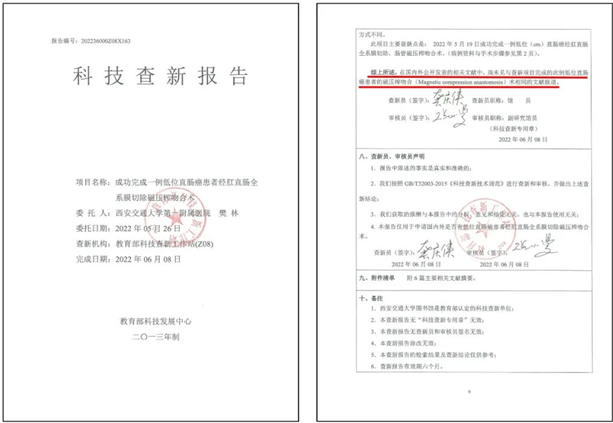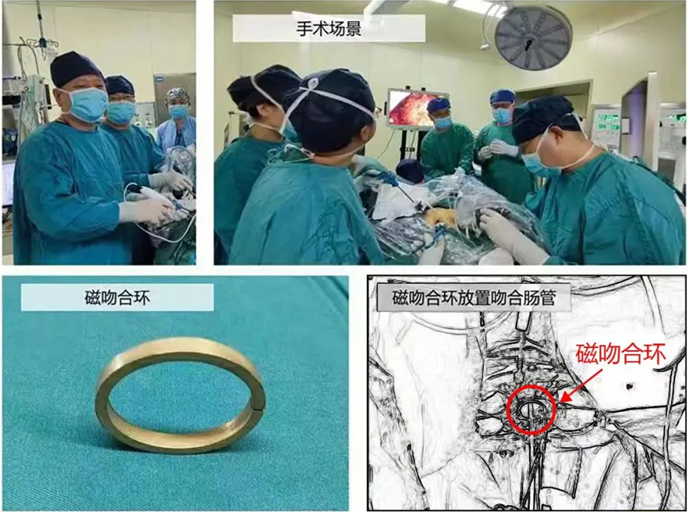Recently, Department of General Surgery cooperated with Surgical Dreamworks of the First Affiliated Hospital of Xi 'an Jiaotong University (XJTU) to successfully perform "transanal total mesorectal excision combined with magnetic compression anastomosis", which not only guaranteed the effect of tumor resection, but also resolved the problems of anastomotic stenosis, bleeding and lifetime carrying of intestinal anastomotic foreign body in the patients. After literature review, this is the first case of its kind worldwide.

Enteroscopy showed that there was a 4 cm×5cm mass in the rectum approximately 5 cm from the anus. Pathological biopsy indicated the diagnosis of rectal cancer. Professor Fan Lin from Department of General Surgery, and Li Xuqi, Deputy Chief Physician in charge of Department of General Surgery in East District carefully discussed the operation plan, and cooperated with the magnetic surgery team led by Professor Lyu Yi to perform "transanal total mesorectal excision (taTME) combined with magnetic compression anastomosis" for this patient with low rectal cancer.
The operating room was equipped with double laparoscopes to work simultaneously. Under laparoscopy, trans-abdominal freeing of rectum and mesentery to pelvic floor was conducted.The second surgical field was established at the anus through anal retractor and single-port laparoscope. The lower incisional margin of the tumor was determined and the rectum was excised under direct vision. Then, retrograde freeing was carried out to the pelvic cavity "from bottom to top". The specimen was pulled out from the anus, the rectum was cut off 10cm above the tumor. The first magnetic compression anastomosis ring was placed in the proximal rectum, and the pouch was embedded in the intestinal stump. The distal rectal stump was closed through transanal pouch suturing, and the second magnetic compression anastomosis ring was inserted. The proximal and distal ends of the rectum were anastomosed by the magnetic adsorption of two magnetic compression anastomosis rings.

Department of Anesthesiology and Perioperative Medicine and Department of General Surgery joined hands to successfully complete the operation, and the rectal magnetic anastomosis was completed within 10 min. Postoperatively, the patient was recovered smoothly. The intestinal wall stuck between two magnetic rings was partially and gradually necrotized, and the intestinal wall surrounding the magnetic rings was gradually healed. At postoperative 11 d, the magnetic anastomosis rings fell off and were discharged along with the necrotic intestinal wall. At postoperative 20 d, colonoscopy showed that the rectal anastomosis was wide and smooth, the intestinal wall was intact, and no foreign body residue was detected. CT virtual colonoscopy indicated that the intestinal pattern was intact and smooth, and the tissues surrounding anastomotic stoma were normal. The patient was highly satisfied with the surgical effect.